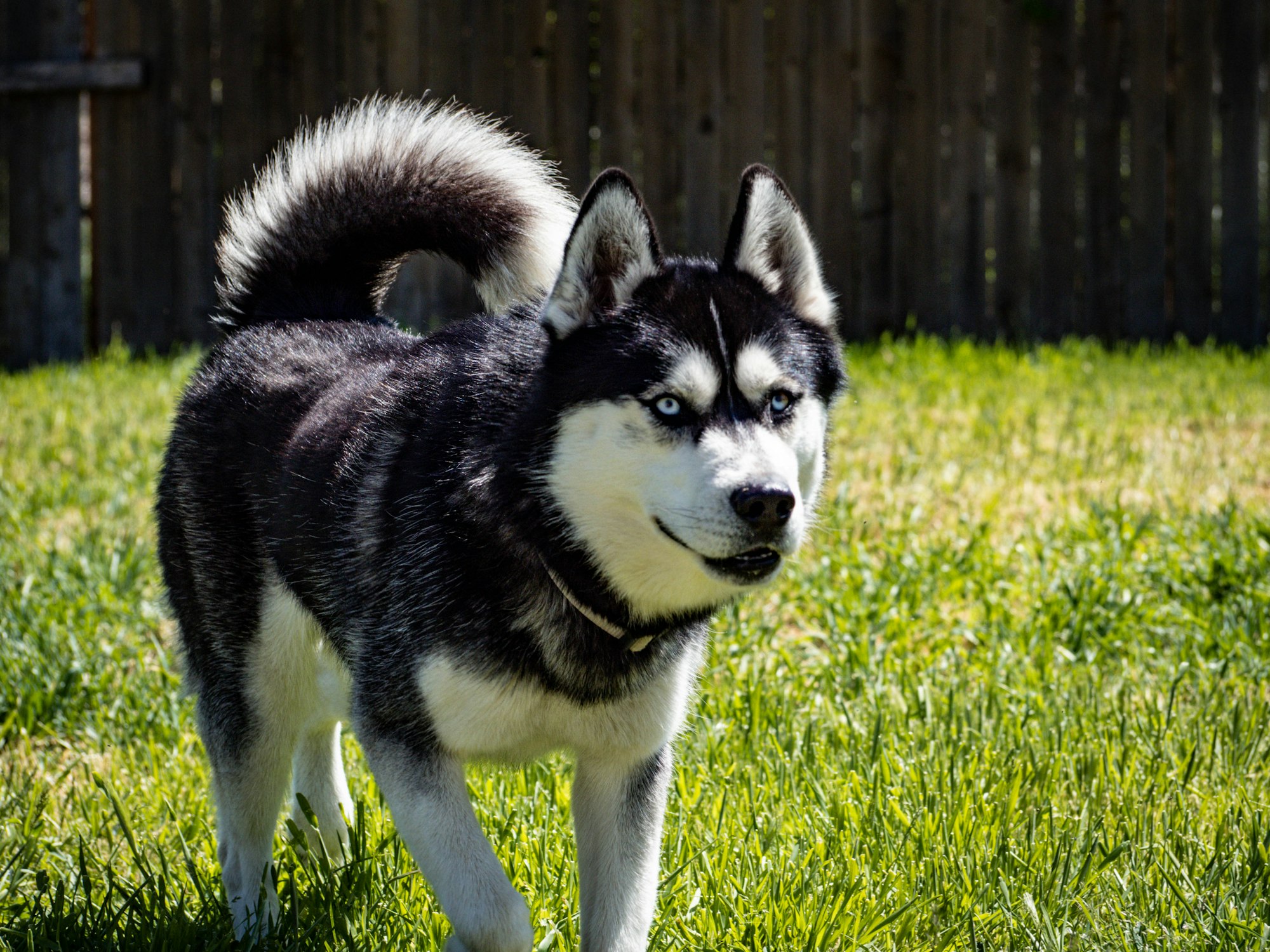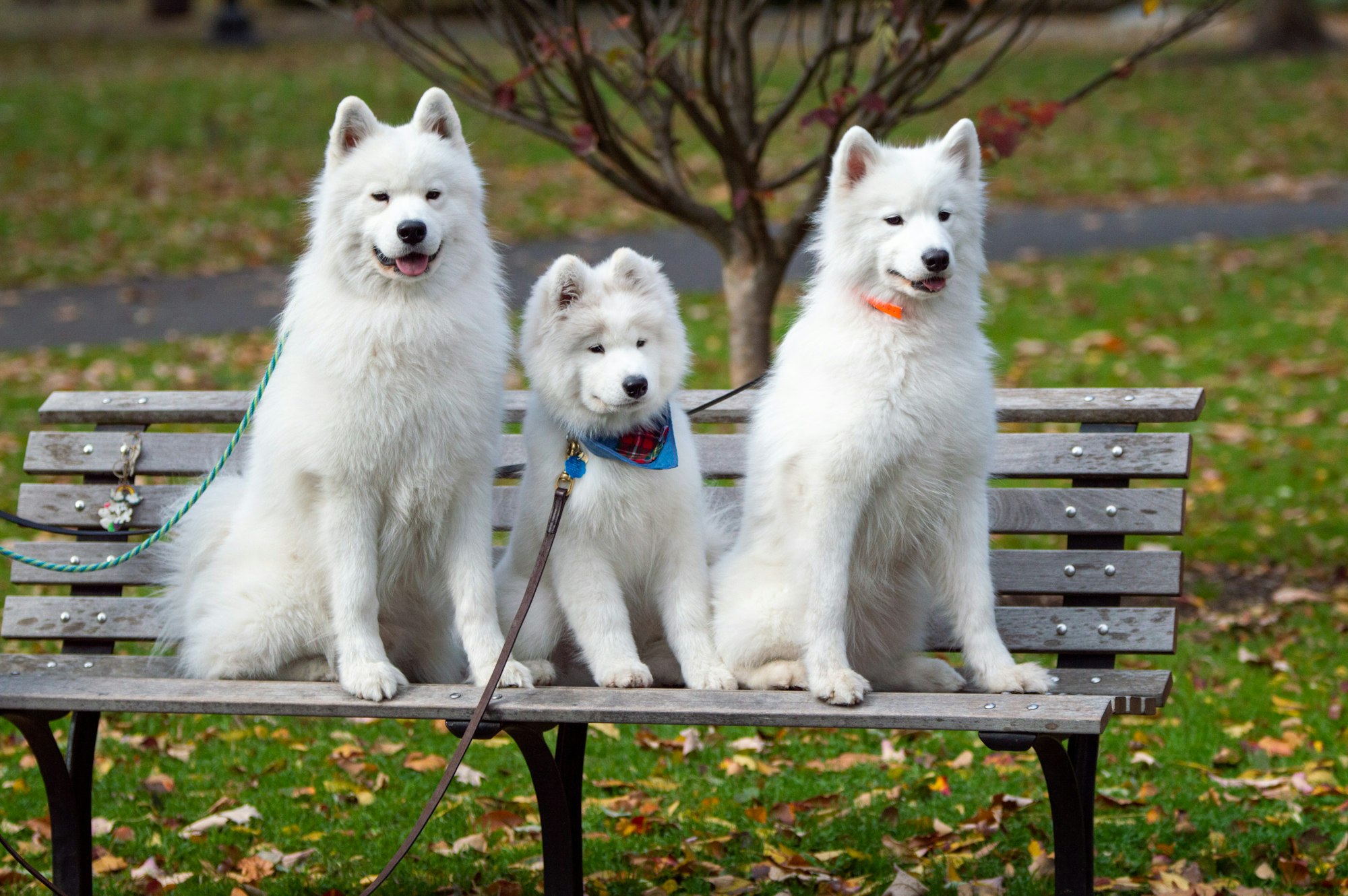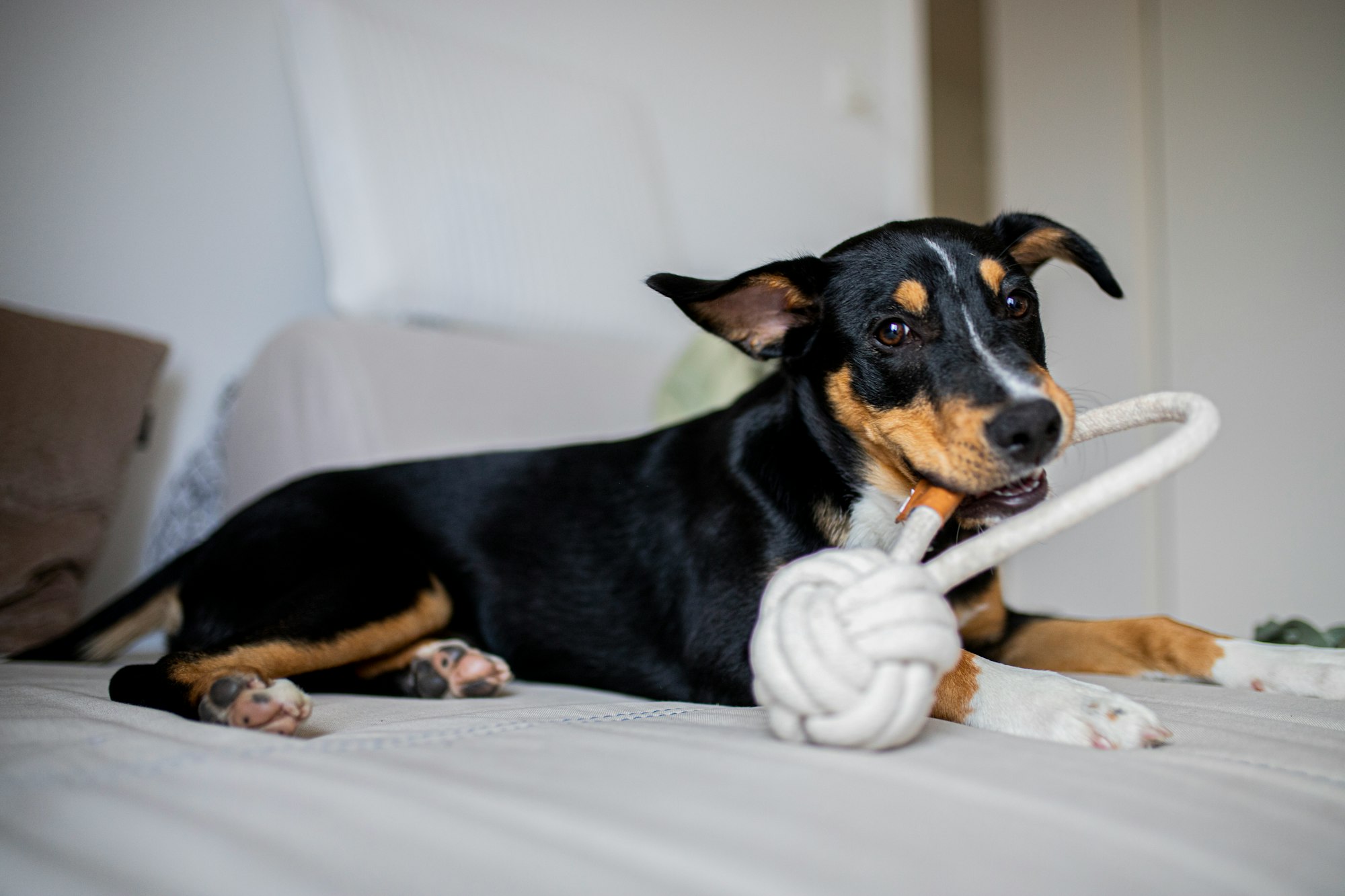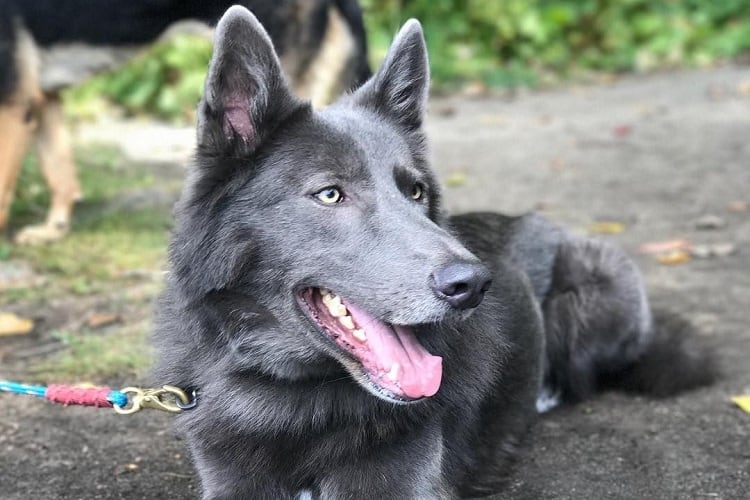From the vast expanse of the Russian landscape emerges a remarkable assortment of dog breeds that have not only captured hearts but also served diverse purposes throughout history. These breeds reflect the country's rich cultural heritage, climate adaptability, and utilitarian nature. In this article, we'll embark on a journey to explore the fascinating world of Russian dog breeds, uncovering their unique traits, historical significance, and the role they play in modern society.

The Enigmatic Allure of Russian Dog Breeds
Nestled within the expansive lands of Russia, a captivating array of dog breeds has evolved over centuries, each with its own distinct traits and purpose. These breeds embody the spirit of resilience, adaptability, and loyalty that is characteristic of Russian culture. Whether trotting through the snowy landscapes of Siberia or guarding rural homesteads, these dogs have carved a special place in the hearts of both their human companions and admirers around the world.
The Resilient Sled Dog
The Siberian Husky stands as a testament to the harmonious blend of strength, endurance, and striking aesthetics. Originating from the harsh terrains of Siberia, these dogs were meticulously bred by the Chukchi people for their ability to pull sleds across vast snowy expanses.

Physical Traits and Appearance: Siberian Huskies exhibit a captivating appearance, characterized by their distinctive double coat, erect triangular ears, and captivating almond-shaped eyes that can be blue, brown, or even one of each. Their striking mask-like markings and variety of dog coat colors contribute to their eye-catching allure.
Endurance and Adaptability: Renowned for their incredible endurance, Siberian Huskies were crucial companions to the Chukchi, helping them traverse long distances through unforgiving snowscapes. Their energy-efficient gait and ability to thrive in cold environments make them unparalleled sled dogs.
Gentle Disposition: Belying their rugged exterior, Siberian Huskies possess a gentle and affectionate nature. They are renowned for their sociable temperament, both with humans and other dogs. Their friendly demeanor and playful attitude make them ideal family pets.
Modern Role: While their historical role revolved around transportation and work, modern Siberian Huskies have found their place as beloved family pets and even competitive athletes in dog sports like mushing and agility. Their intelligence and eagerness to please continue to make them a favorite choice for those seeking a loyal and dynamic companion. Get an answer to the question Are huskies smart?
Guardian of the Homestead
The Russian Black Terrier, often referred to as the "Black Pearl of Russia," embodies strength, loyalty, and a resolute commitment to safeguarding its domain. Bred during the mid-20th century in the Soviet Union, these dogs were engineered to serve as versatile working dogs, excelling in protection, herding, and even military roles.
Distinctive Appearance: Black Russian Terriers possess a robust and imposing stature, covered in a coarse double coat that is dense and weather-resistant. Their distinctive all-black coloration adds to their commanding presence, and their expressive eyes radiate intelligence and vigilance.
Loyal Guardian: True to their heritage, Russian Black Terriers exhibit an unwavering dedication to their families. These dogs form strong bonds with their human companions and are ever-watchful protectors of their homes. Their natural wariness towards strangers, combined with their quick reflexes, make them effective guard dogs.
Versatile Abilities: Beyond their protective instincts, Russian Black Terriers display remarkable versatility. They excel in various dog sports and activities, showcasing their agility and intelligence. Additionally, their history as military and police dogs underscores their capacity to handle demanding tasks.
Gentle with Family: While Russian Black Terriers are fierce protectors, they also exhibit a softer side with their families. They are known to be affectionate, loyal, and gentle, making them well-suited for households that prioritize both security and companionship.
Modern Role: In contemporary society, Russian Black Terriers continue to thrive as working dogs and devoted companions. Their imposing presence, coupled with their adaptability and trainability, has earned them a special place in the hearts of families and individuals seeking a steadfast and loving protector.
Borzoi: Graceful Hunter of the Russian Steppe
The Borzoi, with its graceful form and regal demeanor, stands as an embodiment of aristocracy and elegance. Hailing from the vast expanse of the Russian steppe, these dogs have a rich history as noble companions and skilled hunters, capturing both hearts and prey with their unique blend of beauty and athleticism.
Sleek Aesthetics: Borzoi, often referred to as the Russian Wolfhound, boasts a slender and elongated body, accentuated by a long, graceful neck and an aristocratic expression. Their luxurious, silky coat adds to their ethereal appearance, which is further accentuated by a variety of coat colors and patterns.
Historical Role: Bred for hunting, particularly of swift game like wolves, Borzoi were the preferred companions of Russian nobility. Their exceptional speed, keen eyesight, and agile maneuverability made them adept at pursuing and catching game across the expansive Russian landscapes.
Temperament and Companionship: While Borzoi's history is rooted in hunting, their gentle and affectionate nature has endeared them to families around the world. They are known for their quiet and reserved disposition, forming deep bonds with their human companions while maintaining an air of regal dignity.
Exercise and Care: Despite their elegant appearance, Borzoi is more than just showpieces. They have an innate need for regular exercise to keep their bodies and minds engaged. Their luxurious coat requires regular grooming to keep it healthy and free from tangles.
Modern Relevance: In contemporary times, Borzoi continues to excel in various activities such as lure coursing and dog shows. Their unique combination of elegance and athleticism makes them a captivating presence in the world of canine sports and a cherished companion in many households.
Caucasian Shepherd Dog: Protector of Livestock
The majestic Caucasian Shepherd Dog, hailing from the rugged Caucasus mountains, epitomizes strength, loyalty, and an unwavering commitment to safeguarding its charges. Bred for centuries to protect livestock from predators, these imposing canines have earned a reputation as formidable guardians and devoted companions.
Impressive Stature: Caucasian Shepherd Dogs, often referred to as the "Caucasian Ovcharka," possess a robust and imposing physique. Their thick double coat, massive head, and well-muscled body contribute to their commanding presence, underscoring their role as powerful protectors.
Guardianship Instincts: Rooted in their history as livestock guardians, Caucasian Shepherd Dogs exhibit an innate instinct to protect and defend. Their keen senses and inherent territorial nature make them excellent watchdogs, and their loyalty to their family and charges is unparalleled.
Training and Socialization: Early and consistent training, along with proper socialization, are crucial for Caucasian Shepherd Dogs. Their natural protective instincts can be channeled through training to ensure that they are well-behaved and responsive in various situations.
Family Bonds: While their primary role is guarding, Caucasian Shepherd Dogs are known for forming deep bonds with their families. Despite their imposing size and protective nature, they often display a gentle and affectionate demeanor toward those they consider part of their pack.
Modern Utility: In modern times, Caucasian Shepherd Dogs continue to serve as reliable working dogs, particularly in rural and agricultural settings. Their presence is a deterrent to potential threats, and their dedication to safeguarding their territory and loved ones remains unwavering.
Samoyed: The Smiling Companion
The Samoyed, often referred to as the "Smiling Sammie," is a bundle of joy and companionship that hails from the frosty regions of Siberia. With their perpetually cheerful expression and fluffy white coats, these dogs have warmed the hearts of people around the world, earning a special place as affectionate family members and beloved companions.

Endearing Appearance: The Samoyed's hallmark "smile" is a reflection of their amiable nature. Their bright eyes and upturned lips give the impression of a perpetual grin, which perfectly complements their cheerful and friendly personality. Their plush double coat, consisting of a soft undercoat and a coarse outer layer, adds to their cuddly and inviting appearance.
Historical Heritage: Originally bred by the Samoyedic people for herding reindeer and sledding, the Samoyed's role extended beyond utility to companionship. They shared the nomadic tribes' lives, providing warmth and camaraderie during the long, cold Siberian nights.
Social and Playful: Samoyeds are renowned for their sociable and playful nature. They thrive on interaction and are often referred to as "smiling socialites" due to their genuine enjoyment of human company. Their gentle disposition makes them excellent companions, especially for families with children.
Exercise and Stimulation: These energetic dogs require regular exercise and mental stimulation to keep them happy and healthy. Engaging in activities like playtime, walks, and even dog sports can help channel their abundant energy in positive ways.
Modern Role: In modern times, the Samoyed's role has expanded to that of a delightful family pet and therapy dog. Their affectionate nature, coupled with their striking appearance, has made them popular participants in various canine activities and a comforting presence in therapy and emotional support roles.
Bolonka: The Tiny Treasure
The Bolonka, a small and endearing breed, is a true gem in the world of Russian dogs. Despite its diminutive size, this "Tiny Treasure" packs a big personality and a heart full of devotion, making it a cherished companion and a delightful addition to any household.
Petite Proportions: Bolonkas are characterized by their small stature and charming features. With a silky coat that comes in a variety of colors, including black, white, and shades in between, they captivate hearts with their dainty appearance.
Lively and Loyal: Don't let their size fool you – Bolonkas have an exuberant and lively spirit. They form strong bonds with their human companions and are known for their unwavering loyalty. Their friendly and affectionate nature makes them ideal lapdogs and steadfast companions.
Adaptability: Bolonkas are well-suited for apartment living due to their small size and relatively low exercise needs. While they enjoy playtime and short walks, they are content to snuggle up on the couch with their favorite person.
Intelligent and Trainable: These intelligent dogs are quick learners and can excel in obedience training and various canine sports. Their eagerness to please and their love of attention make training sessions enjoyable for both the dog and their owner.
Modern Appeal: In contemporary society, Bolonkas continue to win hearts as cherished family pets. Their compact size, combined with their loving nature, makes them a popular choice for individuals and families seeking a loyal and affectionate companion to brighten their days.
Laika Breeds: Pioneers of Space Exploration
The Laika breeds, a group of brave and intrepid canines, occupy a unique place in the annals of history as pioneers of space exploration. Hailing from Russia, these dogs embarked on a journey that forever changed our understanding of the cosmos, serving as trailblazers for human space travel and leaving an indelible mark on the pages of scientific achievement.

Soviet Space Endeavors: During the 1950s and 1960s, the Soviet Union initiated a series of ambitious space missions that sought to propel humanity beyond Earth's boundaries. Among these missions were those that included canine cosmonauts, primarily of the Laika breeds, chosen for their adaptability and suitability for space travel.
Laika's Legacy: Laika, a stray dog with a heart full of courage, became the first living being to orbit the Earth aboard the Sputnik 2 spacecraft in 1957. Her journey was a testament to the spirit of exploration and the willingness to push the boundaries of scientific knowledge, even at great personal sacrifice.
Scientific Insights: The data gathered from Laika's mission provided valuable insights into the effects of space travel on living organisms. This knowledge was instrumental in advancing our understanding of the challenges and potential risks associated with human spaceflight.
Ethical Considerations: Laika's mission raised significant ethical questions about the treatment of animals in scientific experiments. While her sacrifice paved the way for human space exploration, it also prompted a broader conversation about the ethical treatment of animals involved in scientific research.
Continued Impact: The legacy of Laika and her fellow canine cosmonauts continues to influence space exploration. Their contributions have led to advancements in life support systems, biomedical research, and spacecraft design, all of which have played a crucial role in shaping the future of human space travel.
Russian Toy Terrier: Petite and Playful
The Russian Toy Terrier, often lovingly referred to as the "Russkiy Toy," is a small and spirited breed that encapsulates the essence of companionship in a pint-sized package. Originating from Russia, these petite dogs have captured the hearts of dog enthusiasts with their charming demeanor and endearing presence.
Miniature Marvels: Russian Toy Terriers come in two coat varieties – smooth and long-haired. Despite their diminutive size, they exude confidence and elegance, captivating onlookers with their graceful movements and expressive eyes.
Joyful Companionship: True to their name, Russian Toy Terriers thrive on companionship and interaction. They form strong bonds with their human families and relish opportunities to participate in daily activities. Their playful nature adds a touch of delight to every moment shared with them.
Adaptable to Living Spaces: Their small size makes Russian Toy Terriers well-suited for apartment living. They require moderate exercise, which can be easily fulfilled through indoor play and short walks. Their compact stature and adaptable nature make them excellent companions for urban dwellers.
Training and Socialization: Early training and socialization are key for Russian Toy Terriers to develop into well-behaved and well-adjusted pets. Their intelligence and eagerness to please make them responsive to positive reinforcement training methods.
Cherished Friends: Russian Toy Terriers bring boundless joy to their families, enriching lives with their lively personality and affectionate nature. Their petite frames house enormous hearts filled with love and devotion, making them a treasured addition to any loving home.

Central Asian Shepherd Dog: Ancient Guardian of Nomads
The Central Asian Shepherd Dog, a majestic and venerable breed, emerges from the heart of nomadic cultures, where its unwavering loyalty and formidable presence have protected both livestock and human companions for centuries. Hailing from the expansive regions of Central Asia, these dogs embody the resilience and bond between man and canine in a nomadic way of life.
Powerful Protector: Central Asian Shepherd Dogs, also known as Alabai, boast a robust physique and an imposing presence. Their large size, strong build, and thick coat make them well-suited for guarding against predators and potential threats.
Historical Significance: These dogs have been an integral part of the nomadic lifestyle, guarding herds of sheep, goats, and other livestock against predators and ensuring the safety of their human charges. Their loyalty and dedication have made them indispensable to the livelihoods of many nomadic communities.
Temperament and Training: While their protective instincts run deep, Central Asian Shepherd Dogs are known for their gentle and affectionate nature with their families. Early socialization and training are crucial to help them channel their protective instincts appropriately.
Modern Role: In modern times, Central Asian Shepherd Dogs continue to serve as loyal guardians, often found protecting livestock, and homes, and even as loyal companions. Their ancient heritage and innate sense of responsibility make them a natural choice for those seeking a steadfast and protective canine companion.
Yakutian Laika: Surviving the Chill of Siberia
The Yakutian Laika, a hardy and resilient breed, thrives in the frigid landscapes of Siberia, where its endurance, adaptability, and unwavering loyalty have enabled it to not only survive but thrive in one of the harshest climates on Earth. Bred by the indigenous peoples of the Yakutia region, these dogs embody the spirit of survival and companionship.
Cold-Weather Champion: Yakutian Laikas exhibit a thick double coat, a bushy tail that curls over their back, and pointed ears that protect them from the extreme cold. Their robust build and efficient metabolism allow them to withstand the chill of Siberian winters.
Historical Role: For generations, Yakutian Laikas have been invaluable to the Yakut people, assisting in tasks such as herding reindeer, pulling sleds, and providing warmth through shared body heat during bitterly cold nights.
Adaptability and Intelligence: These dogs are not only well-suited for the cold but their intelligence and versatility also make them suitable for various roles. Their natural aptitude for learning and their keen senses have allowed them to excel in activities such as search and rescue.
Modern Appeal: In contemporary times, the Yakutian Laika's unique attributes have garnered attention beyond its native land. As a faithful and enduring companion, this breed continues to find its place in the hearts of those who appreciate its rugged beauty and unwavering loyalty.
From Workforce to Companionship
Russian dog breeds have transcended their historical roles, seamlessly adapting to the changing needs of society. From their origins as working dogs and guardians, these breeds have gracefully embraced the role of cherished companions, enriching the lives of countless individuals and families.
Safeguarding Heritage and Diversity
Efforts to preserve and protect these unique Russian breeds are essential to maintain their genetic diversity and cultural significance. Breed enthusiasts, organizations, and dedicated breeders play a pivotal role in ensuring that these exceptional dogs continue to thrive for generations to come.
Conclusion:
In the realm of dog breeds, Russia boasts an extraordinary ensemble of companions, workers, and protectors. From the frosty tundras of Siberia to the lush valleys of the Caucasus, these dogs embody the spirit and resilience of their homeland. As we celebrate the diverse tapestry of Russian dog breeds, let us cherish their contributions, honor their heritage, and embrace the timeless bond between humans and their loyal canine counterparts.
FAQs
Q1: What is the origin of Russian dog breeds?
A1: Russian dog breeds have their roots in various regions of Russia, where they were developed to serve specific purposes such as hunting, herding, and guarding.
Q2: Are Russian dog breeds suitable for families with children?
A2: Many Russian dog breeds have gentle and affectionate personalities, making them suitable companions for families with children. However, early socialization and training are essential.
Q3: Do Russian dog breeds require special grooming due to their climate adaptations?
A3: Some Russian breeds have dense coats to protect against harsh weather. Regular grooming is necessary to keep their fur in good condition and prevent matting.
Q4: Are these breeds prone to any specific health issues?
A4: Like all breeds, Russian dog breeds may have specific health considerations. Responsible breeding practices and routine veterinary care can help mitigate potential health issues.
Q5: How can I get more information about adopting a Russian dog breed?
A5: To adopt a Russian dog breed, consider reaching out to breed-specific rescue organizations, reputable breeders, and online platforms dedicated to pet adoption.






